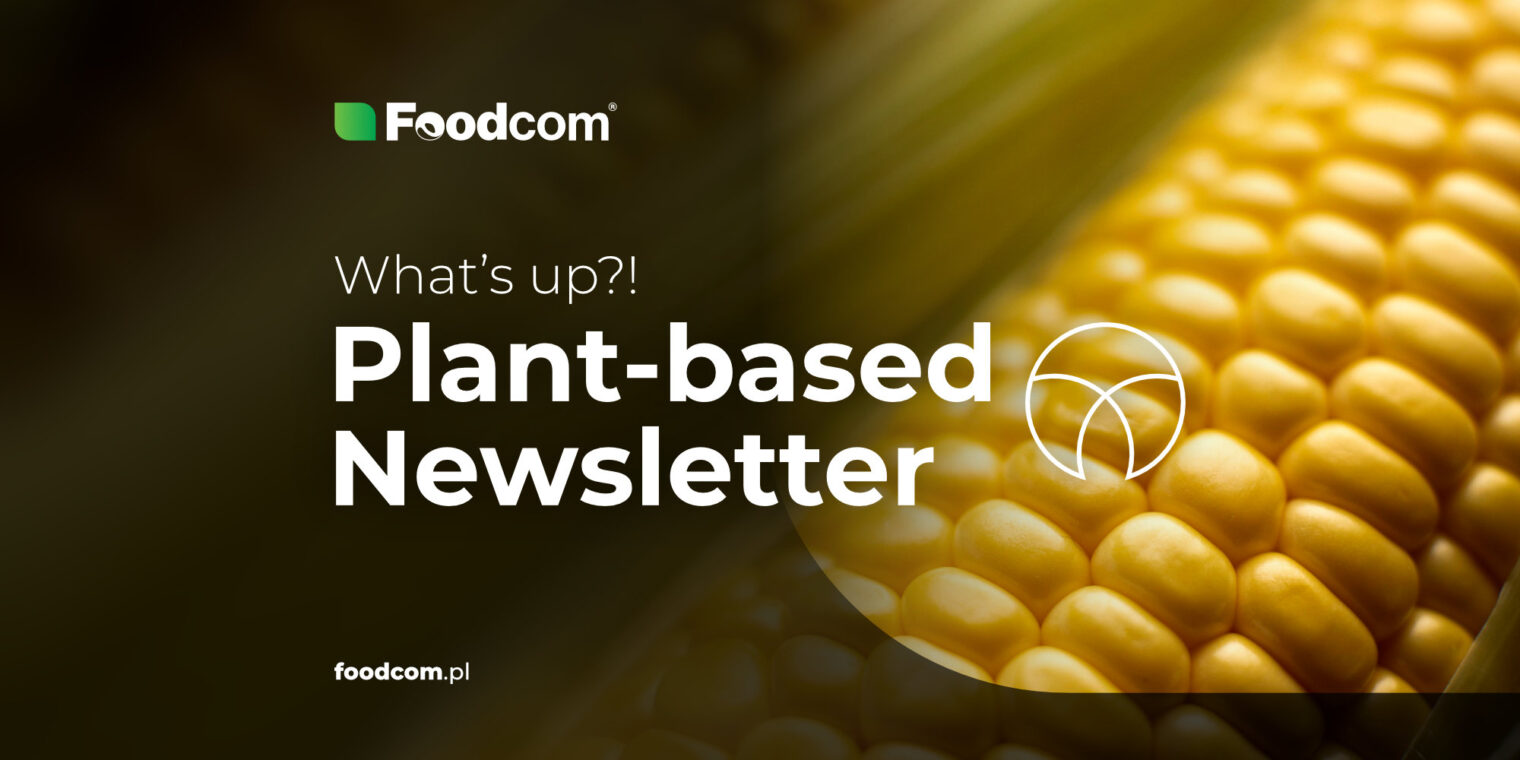What a beautiful anniversary! Of what, you ask? Almost exactly one year ago, the first edition of the Foodcom Plant-Based Newsletter appeared in your email inboxes. A lot has happened in that time, no one can deny that. Also, there’s been a lot going on lately. It seems difficult to squeeze all the important events into a single message, but fortunately, we are not afraid of challenges.
The market situation changes dynamically. In addition to the events directly related to the market for plant-based commodities, there are a lot of other things that affect it. For a variety of reasons, the cow population is declining. The bird flu that is rampant around the world is also causing poultry flocks to shrink. As a result, less feed is being bought for them, so demand for certain feed-grade raw materials is falling.
Of great interest recently are commodities produced from soybeans, including Soy Lecithin and Soy Protein Isolate. The demand for them is high, and the price remains stable. The inquiries come mainly from nutrient manufacturers. What about other plant-based raw materials? Read on to find out!
Continue reading to learn about this week’s market insights.
With us, you’ll never miss a thing!
Natural Sweeteners
Many Dextrose users choose a commodity from China or India as an alternative to a more expensive one from Europe. However, not everyone has this option – some require a product of European origin, while others are concerned about heavy metal content and delays in delivery of raw materials from Asia. The market for feed-grade Dextrose is waking up and inquiries are being made, mostly for Chinese raw material. Maltodextrin is becoming more popular, but right now, most of the offers on the market are expensive, and it does not look like they will get cheaper anytime soon. At the same time, there are competitive, cheaper offers from Asia that can put price pressure on raw materials from other regions.
Native Starches
There are many offers from China, but buyers are reluctant to reach for native starches from this region. The market situation for Native Corn Starch remains stable. Demand for Native Potato Starch is increasing. The decisive factor for the situation of this commodity continues to be the recent poor potato harvest, which means that demand is still exceeding supply. Both demand and supply of Native Wheat Starch remain at a low level. The reason for this could be the higher margins on the sale of modified starch, which could encourage the allocation of larger quantities of native starch for the production of modified starch.
Modified Starches
Modified Corn Starch is wild and crazy. The situation in this particular market is changing dynamically because there are very small quantities of Native Waxy Starch (the basis for Modified Corn Starch) available. There is not enough raw material to produce Modified Corn Starch. The major suppliers are sold out, and those who still have the commodity are growing their own corn. As we have already said (written?), there is not much Native Potato Starch on the market. For this reason, there is even less Modified Potato Starch available.
Proteins
Recently, we have received many inquiries about Vital Wheat Gluten. Most of these inquiries are for the food grade, and they all involve large or very large quantities. Normally, there is not much interest in this raw material in January, but this year it is relatively high. Some traders are waiting for prices to drop. There are also inquiries for feed grade, but often it is difficult to meet the expectations of both sellers and buyers in terms of price. Corn Gluten Meal is on the rise, prices have dropped recently, and interest has increased accordingly. It is now the most popular plant-based product in terms of feed grade. Potato protein? Not much to speak of, so we decided not to.
What else?
Europe
Unfavorable weather conditions in the United Kingdom are negatively impacting the country’s sugar production
Forecasts for sugar production in the United Kingdom for the 2022/2023 season have never been particularly optimistic, but have recently been revised further downward due to severe weather conditions. Farmers say that low temperatures have damaged some of the sugar beets currently in the ground, which will certainly translate into lower sugar production. Not particularly sweet news, right?
France sees an increase in soft wheat exports outside the European Union
France, Europe’s largest wheat exporter, has seen a significant increase in soft wheat sales in recent months. The main reason for this is growing demand from North African countries. France’s position is also strengthened by the rising cost of insurance of shipments from Russia, the world’s largest wheat exporter.
Lower wheat and corn harvests in Ukraine
2023 will be the second consecutive year in which Ukraine’s wheat and corn yields will decline. Current forecasts predict production of 18 million tons of corn and 16 million tons of wheat, but this is a relatively optimistic option, and extremely unfavorable weather conditions could lower production levels even further. The main reasons for the decrease are, of course, the restrictions on cultivation related to the ongoing armed conflict. In the current situation, many Ukrainian farmers are struggling to survive.
The Americas
The corn situation between Mexico and the United States remains tense
The issue of regulation, including a ban on the importation of genetically modified corn into Mexico, has been in the news for several weeks. Farmers from the United States are very concerned about the situation, as many of them have sold a significant portion of their crop to Mexico and have never grown a conventional corn variety. Switching to it, they say, would require significant investment, so they are realistically concerned about their future. Finding a solution to this situation that satisfies all parties is definitely not a can of corn.
California’s weather patterns are changing dynamically
The state, which has struggled with a devastating drought for the past 3 years, is finally experiencing the coveted heavy rains. Perhaps too heavy, but that remains to be seen. Still, the current weather situation gives hope that water allocations this season will be more favorable to farmers than in the past three years. Much depends on whether the drought will be a hot topic again in a few months…
Mexico has ambitious plans to reduce its corn imports
The country aims to reduce corn imports by 30% or even 40% by 2024. Mexico is already largely self-sufficient in white corn production. The yellow variety, used mainly for animal feed, is in most part imported from abroad, mainly from the United States. This is expected to change as early as next year. The plans are ambitious, there’s no denying that.
Asia & Oceania
China currently grows more corn than rice
According to the latest data, corn accounts for 43% of China’s grain crop, while rice accounts for 34%. However, this does not mean that corn has taken the place of rice on the plates of the Chinese. Corn is used in large quantities for livestock feed and also for ethanol fuel. Corn syrup, which is added to many processed foods, is becoming increasingly popular as well.
Australia notes record grain harvest
Australian wheat production in the 2022-23 marketing year will reach a record 37 million tons, up from 36.34 million tons the previous year. The barley crop is expected to reach 13.5 million tons, the fourth highest in history. Sorghum production is estimated at 2.9 million tons and could be the third highest ever. However, this does not change the fact that weather conditions have been unfavorable recently. Heavy rains and flooding, among other things, have affected the quality of wheat, much of which has fallen into the feed grade.
The price of wheat flour has almost doubled in Nepal
The reason for this extreme price increase is mainly due to export restrictions on staple foods imposed by India. These restrictions were introduced in May last year. The shortage of wheat flour has been strongly felt in the country and has negatively affected the production of goods such as cookies, bread, noodles and naan.







